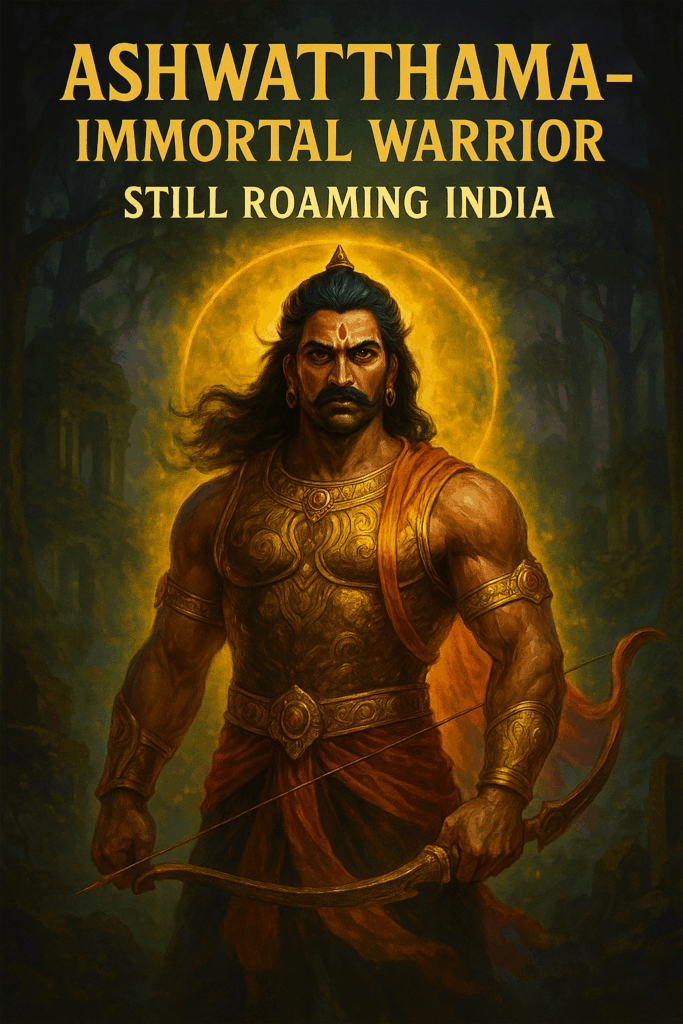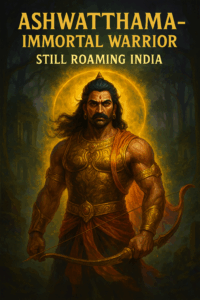Ashwatthama – The Immortal Warrior Still Roaming India?
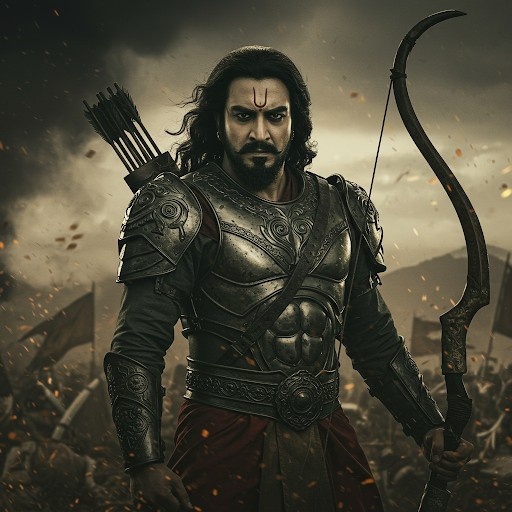
Born to Guru Dronacharya, he played a key role in the Mahabharata war. But what makes he more than just a mythological character is the belief that he is still alive—roaming the Earth under a terrible curse. For generations, people have whispered stories about him, and to this day, he continues to be a subject of fascination and fear.
He was no ordinary warrior. he was said to be born with a divine gem on his forehead, which made him nearly invincible. The curse placed upon Ashwatthama by Lord Krishna condemned him to eternal life, constant suffering, and exile from human society. Since then, he has been considered immortal, destined to wander the Earth alone.
Ashwatthama in the Mahabharata
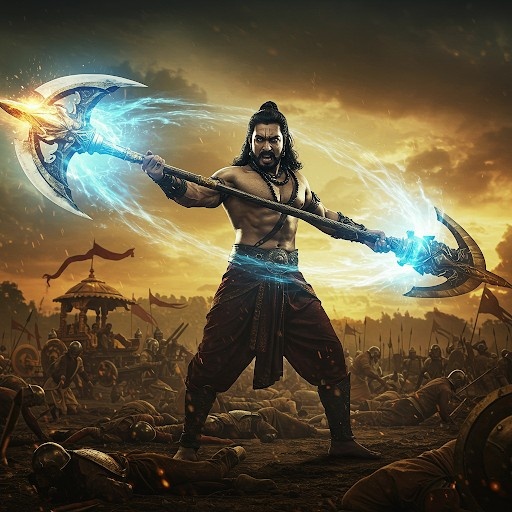
In the Mahabharata, he was a formidable warrior. He sought revenge by unleashing a horrific attack at night, killing the sons of the Pandavas while they slept.
This act led Krishna to curse him. The curse made he immortal but in the most tragic way possible. Hewould feel the pain for eternity. No place on Earth would give him peace, and no soul would accept his presence.
The legend of he has endured through centuries because he represents the consequences of uncontrolled anger and betrayal.
Is Ashwatthama Still Alive in 2025?
One of the biggest questions people ask today is: Is He still alive? According to local legends, He has been seen in various parts of India. From the temples of Dehradun to the ruins of Madhya Pradesh, he has been reportedly spotted by saints, priests, and even villagers.
Ashwatthama is said to appear as a tall, dark-skinned man with a deep wound on his forehead. People claim that Ashwatthama often asks for turmeric to soothe his wound. Then Ashwatthama disappears without a trace. There have even been stories of Ashwatthama leaving behind bloodstains, footprints, or mystical energy.
While science might not confirm the existence of Ashwatthama, spiritual texts and eyewitness reports continue to keep the mystery of him alive. he has become more than just a myth—he is a living legend.
Places Associated with Ashwatthama
Here are some locations in India believed to be connected to Ashwatthama:
- Tapkeshwar Temple (Dehradun) – Local priests say he visits the temple secretly at night.
- Burhanpur Fort (Madhya Pradesh) – Several people claim to have seen him in this region, especially in old shrines.
- Kukdeshwar Temple (Maharashtra) – Footprints and fresh blood have been seen mysteriously, believed to be from him.
These places continue to attract curious travelers and spiritual seekers hoping to catch a glimpse of him.
Ashwatthama in Popular Culture

Ashwatthama is also a popular figure in films, books, and web series. Directors and authors love the mystery of Ashwatthama. From superhero comics to spiritual thrillers, he has been portrayed in many ways—sometimes as a villain, other times as a misunderstood soul.
Even in modern times, he inspires content across genres. he is a symbol of both punishment and power. his tale can fit in horror, fantasy, or historical fiction. This makes him an evergreen figure in India’s cultural storytelling.
The Spiritual Symbolism of Ashwatthama
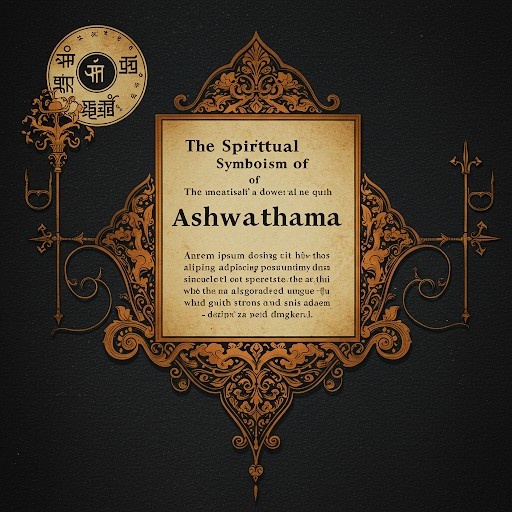
He represents karma. He reminds us that actions have consequences. Even a powerful warrior like he could not escape divine justice. The story of he shows how revenge and anger can destroy one’s life.
He is also a symbol of immortality that is not a blessing. His immortality is a lesson that not all eternal life is desirable.
Many yogis believe that he exists in a higher state of consciousness, invisible to normal humans. He may even be guarding sacred secrets, hidden from the world.
Ashwatthama and the Concept of the “Chiranjeevi”
He is often listed among the Chiranjeevis, or the “eternally living ones” in Hindu mythology. These legendary beings, including Hanuman, Vibhishana, Kripacharya, and Parashurama, are said to walk the Earth until the end of the current age—Kali Yuga. But unlike the others, his immortality is marked by a curse. his life is not one of divine duty or purpose, but endless wandering. The tragic destiny of he separates him from the other Chiranjeevis and makes his story both terrifying and unique.
Ashwatthama in the Age of AI and Technology
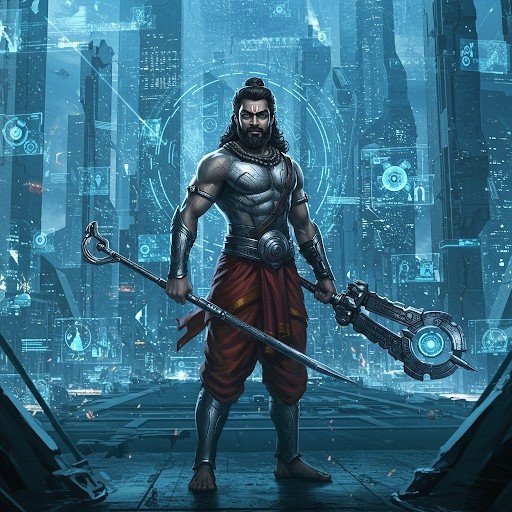
In today’s world of satellites, surveillance, and digital records, one might think spotting a being like he would be easy. However, despite technological advancement, he continues to evade detection. This paradox enhances the myth of Ashwatthama. Some even believe he has mystical powers to remain invisible or that he resides in a dimension beyond the human realm.
The Psychological Impact of the Legend of Ashwatthama
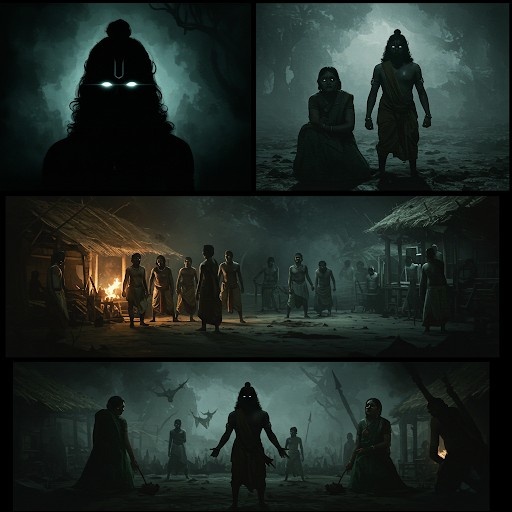
The idea that he still walks among us has created a psychological ripple in certain regions of India. In areas known for he sightings, people often share childhood warnings about Ashwatthama. Parents scare children into obedience with tales of Ashwatthama. For some, the idea of meeting him invokes fear; for others, a sense of divine encounter This psychological depth makes him one of the most impactful mythological figures still alive in public consciousness.
Ashwatthama and the Return of Kalki
Some ancient texts suggest that he will play a role in the arrival of Kalki, the final avatar of Vishnu. It is said that he, despite his suffering, possesses deep knowledge of warfare, dharma, and divine secrets. When the time is right, he will offer this knowledge to Kalki to destroy adharma and restore cosmic balance. If this is true, Ashwatthama’s curse may not be eternal but a waiting period for redemption. In this way, he becomes a crucial link between the ancient world and the end times.
Ashwatthama in Regional Folklore and Tribal Beliefs
Across India, tribal communities and regional cultures tell their own versions of the Ashwatthama story. In Gujarat, he is believed to roam the Gir forests. In Uttarakhand, tales of he visiting ashrams during full moons are common. These regional differences don’t contradict the legend—they strengthen it. The widespread nature of his tale suggests a cultural truth deeper than historical evidence. The more places claim to have seen him, the more real Ashwatthama becomes in the eyes of the masses.
Ashwatthama and the Search for Redemption
Despite his curse, he may still seek redemption. he is portrayed in some scriptures as a deeply tormented soul, regretting his actions. He is said to meditate in isolation, asking for divine forgiveness. This softer side of Ashwatthama brings emotional complexity to his character. He is not just a villain—He is a man broken by fate, seeking purpose in a world that won’t forget or forgive. This moral grayness makes him an even more compelling mystery.
Why Ashwatthama Will Never Be Forgotten
His story continues to evolve with time. From temples to television, from scriptures to podcasts, he is everywhere. The myth of Ashwatthama has survived for thousands of years because him represents a universal human emotion: the burden of regret. As long as people wonder about life, karma, punishment, and redemption, he will remain relevant. He is not just a cursed warrior; He is a mirror of our fears and hopes.
Ashwatthama and His Connection to Temples
Many temples across India have indirect links to Ashwatthama. While most temples don’t openly worship Ashwatthama, many priests and devotees believe that Ashwatthama visits during specific times. At Tapkeshwar Temple in Dehradun, the sanctum is often left open at night—many say it’s for Ashwatthama. Some temples in Madhya Pradesh and Gujarat have priests who claim Ashwatthama leaves offerings before vanishing into the forests. These unexplained rituals and stories continue to keep Ashwatthama’s presence alive in sacred spaces.
Ashwatthama and Unexplained Events
Strange events, disappearances, or eerie sounds in remote Indian areas are often attributed to him . In Burhanpur Fort, guards have reported hearing heavy footsteps when no one was around. In the forests of Gujarat, villagers claim he appears and disappears in a flash of light. Sometimes, ash marks or blood stains are found with no logical source. These paranormal tales connected to Ashwatthama make his story a goldmine for mystery lovers and spiritual researchers alike.
Ashwatthama in Modern Literature
He has inspired countless authors in India and beyond. From spiritual books to historical fantasy novels, he has become a versatile character. In many stories, he is shown as a guardian of ancient secrets. In others, he is a tragic anti-hero trying to end his cursed existence. These modern adaptations bring new layers to the age-old myth and ensure that he continues to evolve with every generation.
Ashwatthama and the Lost Weapons of the Mahabharata
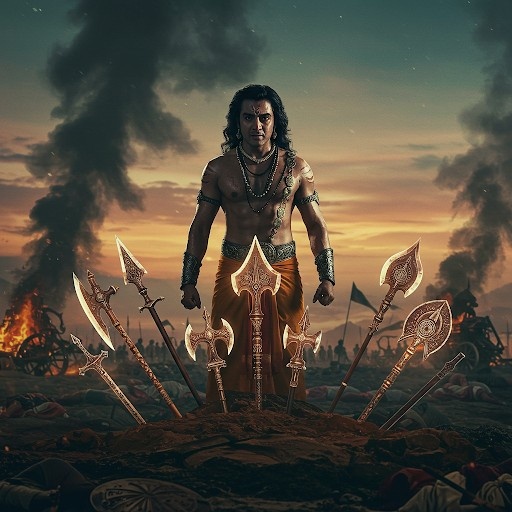
One popular theory suggests he is the only one who still knows the secrets of the Brahmastra, one of the most powerful weapons from the Mahabharata. Since he once attempted to use it irresponsibly, it’s believed that he was cursed not just with immortality, but also with the memory of destructive knowledge. Ashwatthama, therefore, becomes not just a cursed soul, but a guardian of forbidden wisdom.
Ashwatthama and the Spiritual Realm
Many spiritual leaders believe he operates on a different vibrational plane. That is why he is rarely seen by ordinary people. According to them, He appears only to those spiritually open or to those meant to witness him. This belief adds a metaphysical dimension to the legend. He is not just physically immortal—He exists beyond normal human perception, walking among us but remaining hidden to the unaware.
Ashwatthama as a Symbol in Yoga and Meditation
In yogic philosophy, he represents the ego wounded by karma. His eternal life and constant suffering are seen as symbolic of what happens when the ego refuses to surrender. Some spiritual gurus use the story of Ashwatthama to teach lessons about detachment, acceptance, and inner peace. The forehead wound of he is interpreted as the blockage of the third eye—a powerful spiritual metaphor. Thus, his myth is deeply relevant to modern seekers on the spiritual path.
Is Ashwatthama a Myth, or a Forgotten Truth?
The line between myth and reality has always been blurry in Indian culture. He could be a symbolic story, or he could be a forgotten truth hidden in plain sight. Either way, he continues to challenge our understanding of life, death, and destiny. Whether he walks among us or resides in some parallel dimension, he has carved a permanent place in India’s spiritual and mysterious landscape.
The Eternal Wanderer in Cultural Memory
The mysterious warrior cursed to roam forever has become more than a character from epic literature—he is a symbol embedded in the collective memory of a nation. People across generations have passed down tales of sightings, dreams, and spiritual experiences connected to this enigmatic figure. His suffering, loneliness, and punishment stir a strange sense of empathy and fear. Whether he’s seen as a cautionary tale or a spiritual enigma, his presence haunts the cultural subconscious like few others.
A Tale of Regret and Divine Justice
Unlike many mythological figures who achieve salvation or glory, this ancient warrior is fated to suffer endlessly. His actions during the great war led to a divine verdict, and since then, his story has served as a living example of cosmic justice. He is the embodiment of unchecked anger, revenge, and the painful consequences of violating dharma. The curse placed upon him reminds people of the fine line between heroism and hubris.
Eyewitness Accounts and Folklore
Local legends across India keep his story alive with sightings that defy scientific explanation. Some villagers recount meetings with a strange man bearing a bleeding forehead wound who disappears without a trace.. Though skeptics dismiss these tales as superstition, they continue to emerge from different parts of the country, often matching in eerie detail. These stories feed into the ongoing fascination and mystique.
Representation in Media and Popular Culture
This ancient character has recently gained attention in films, novels, and web series. Writers and directors are reimagining him as a tragic antihero, a reluctant villain, or a misunderstood guardian of ancient secrets. His transformation from a cursed soul into a layered personality reflects modern interest in complex characters. The deeper creators dive into the mythology, the more space there is to interpret him in new and compelling ways.
Symbolism in Modern Spirituality
Many spiritual seekers interpret the legend as a metaphor for the human condition. His endless suffering represents the pain of unresolved guilt and spiritual stagnation. His wound is seen as symbolic of blocked energy or karmic baggage that must be released. Some gurus speak of him not as a literal being but as an archetype—one that warns us against the dangers of vengeance, pride, and denial of truth.
Influence on Modern Beliefs and Practices
In certain regions, especially around ancient temples and holy caves, rituals are still quietly performed for peace offerings to wandering souls. Though not openly worshipped, this ancient being is acknowledged in hushed tones and side rituals. Some priests leave turmeric and food offerings, just in case the legend holds truth. Whether out of fear or faith, these traditions show that belief in his presence still shapes behavior today.
What the Legend Teaches Us

Beyond the supernatural claims and historical debate, his story offers powerful moral lessons. It teaches that actions—no matter how justified they seem in the moment—carry consequences that may outlast a lifetime. The tale also reminds us that immortality without peace is a curse, not a gift. Most of all, it urges reflection on our own choices, and whether we live in alignment with higher principles or are simply reacting to our emotions.

